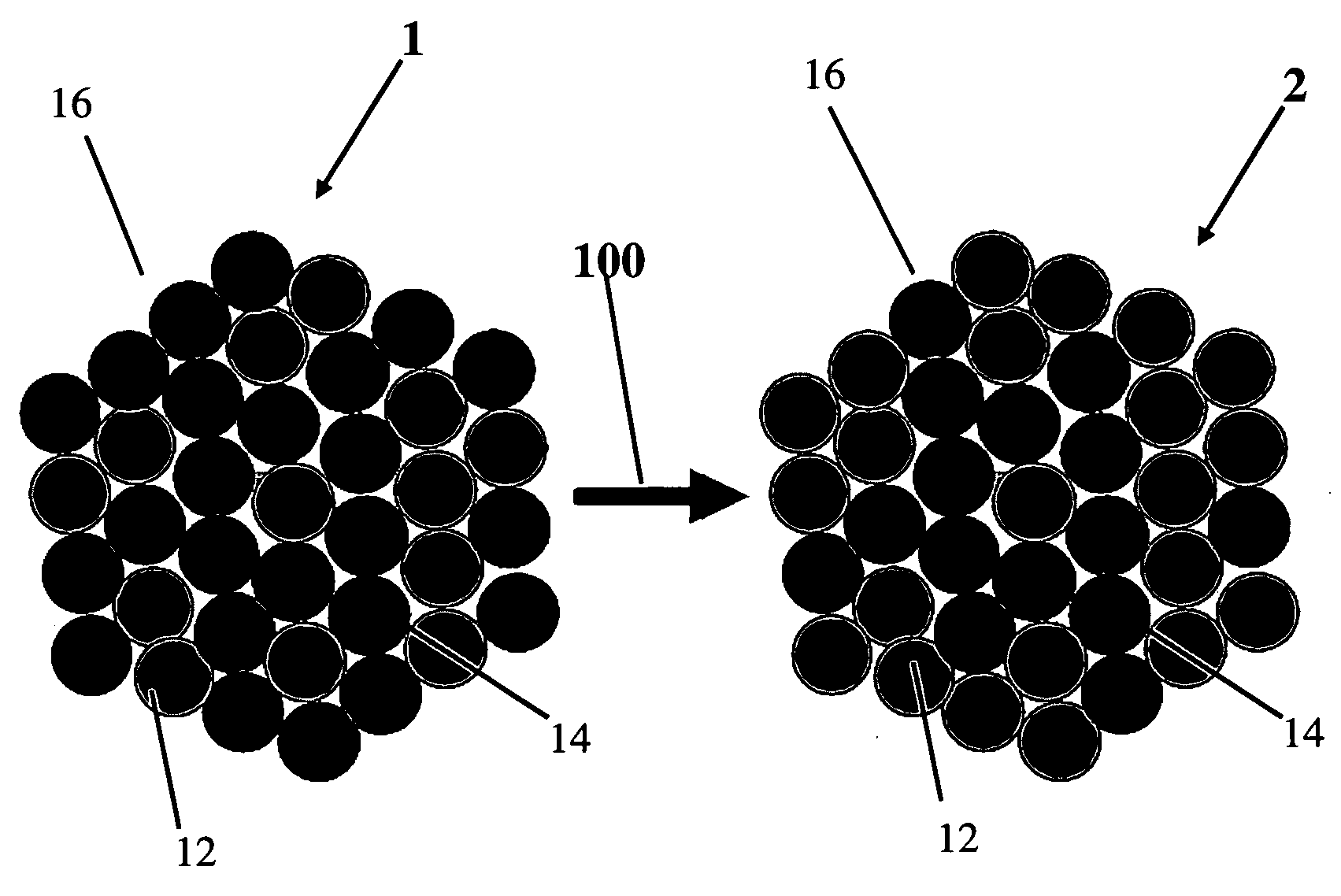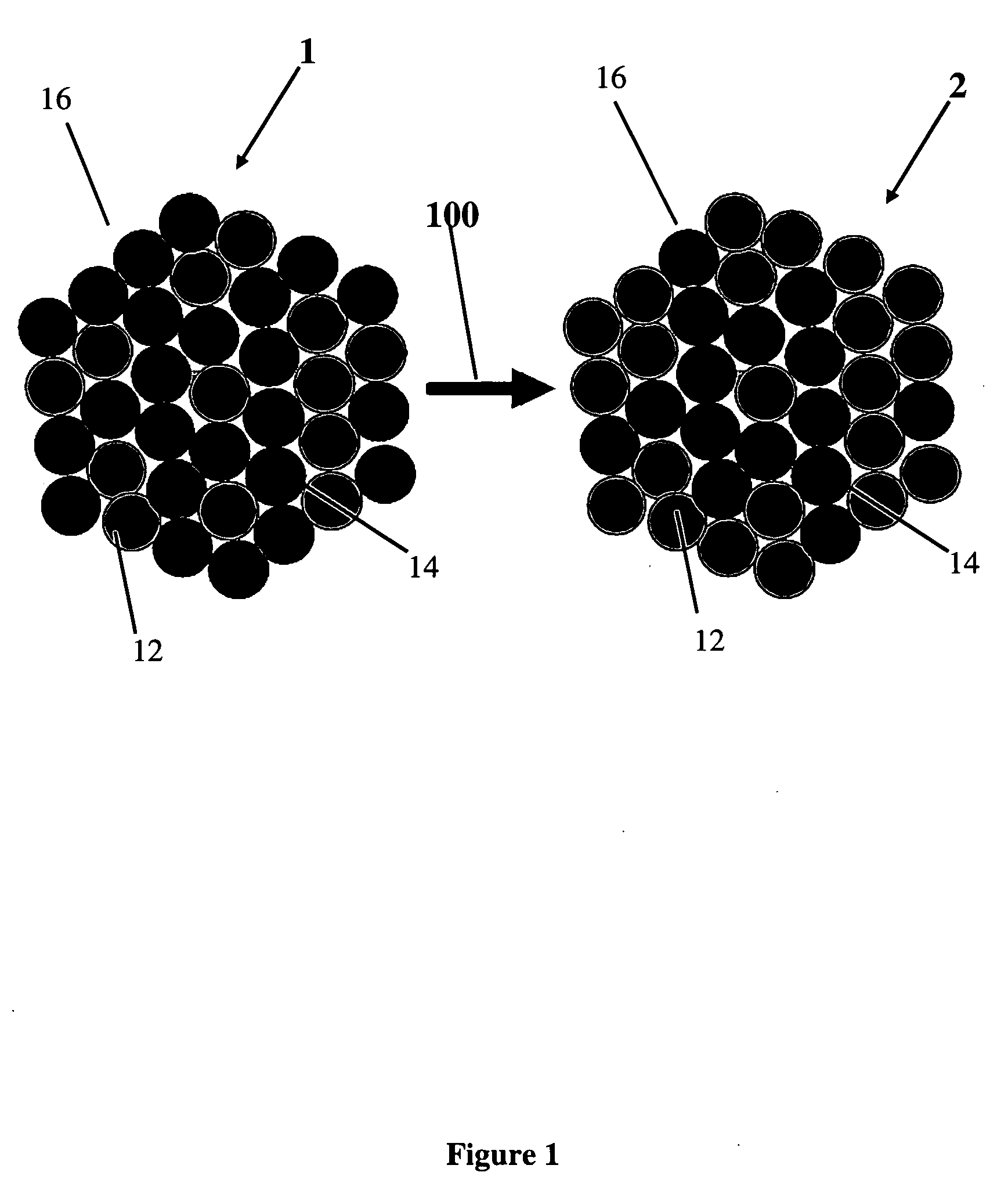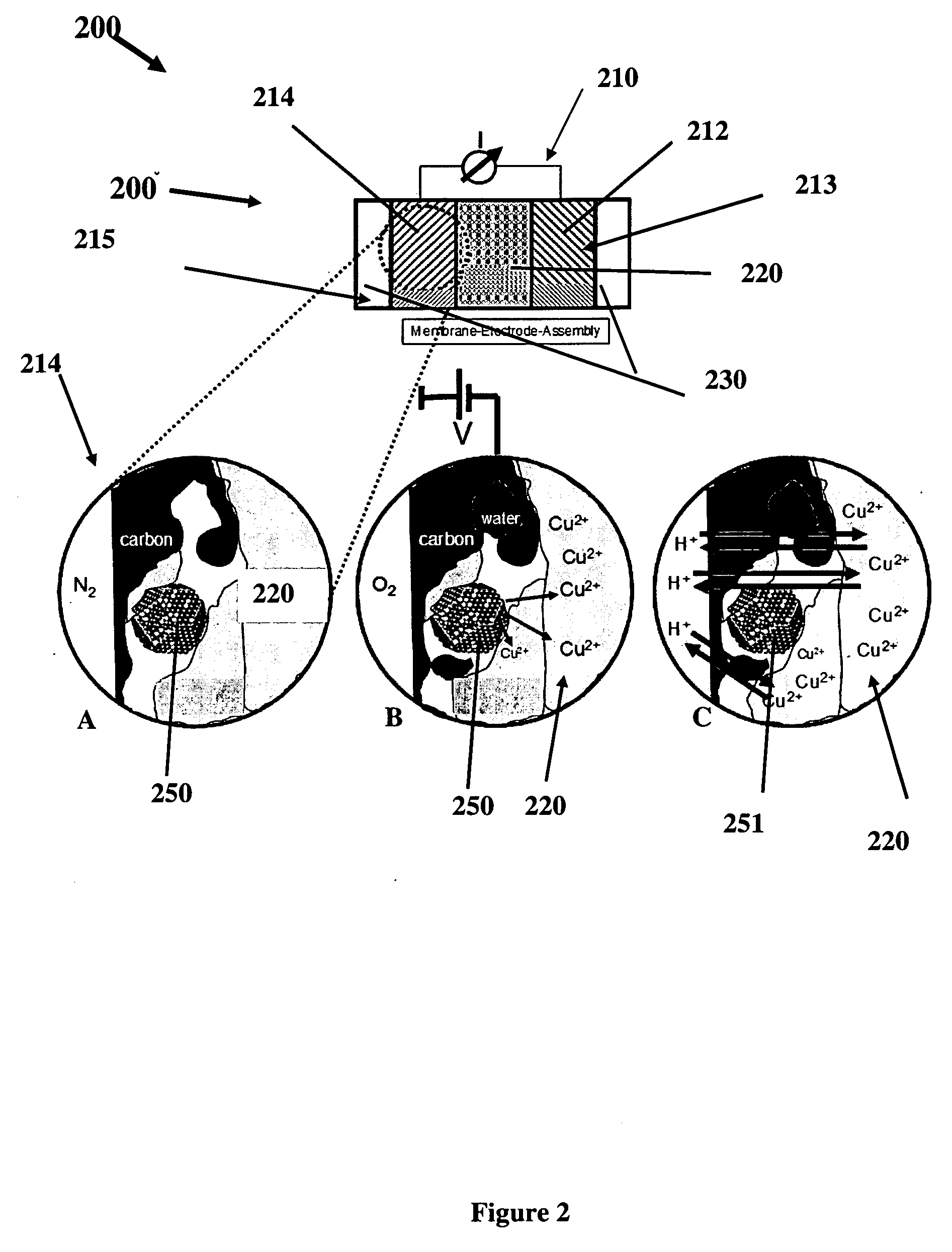De-alloyed platinum nanoparticles
- Summary
- Abstract
- Description
- Claims
- Application Information
AI Technical Summary
Problems solved by technology
Method used
Image
Examples
examples
Summary of Experimental Process
[0049]Alloy precursors with Pt:Cu:Co stoichiometries of about 20:60:20, 20:20:60 and 20:40:40 respectively, were prepared from carbon supported 30 wt % Pt nanoparticles (30% by weight) mixed with Cu and Co salt solutions via an impregnation, freeze-drying, reductive-annealing method. Rotating disk electrode (RDE) activity measurements were performed in a three-electrode configuration on a 5 mm Glassy Carbon disk electrode in 0.1 m HClO4 electrolyte. Fuel Cell measurements were carried out using 10 cm2 catalyzed area cells, commercial NAFION® membranes (NRE 212), 40 wt % Pt / C anode catalysts (0.4 mg Pt / cm2) and the ternary alloy precursor employed as cathodes. Voltammetric de-alloying was performed at room temperature by cycling the cathode potential between 0.5 and 1 V / RHE under nitrogen flow. Ion exchange was performed using 1 M Sulphuric acid at 80° C. for 1 hr.
Preparation of the Catalysts
[0050]PtCuCo alloy catalysts were synthesized via a liquid pre...
PUM
| Property | Measurement | Unit |
|---|---|---|
| Temperature | aaaaa | aaaaa |
| Temperature | aaaaa | aaaaa |
| Time | aaaaa | aaaaa |
Abstract
Description
Claims
Application Information
 Login to View More
Login to View More - R&D Engineer
- R&D Manager
- IP Professional
- Industry Leading Data Capabilities
- Powerful AI technology
- Patent DNA Extraction
Browse by: Latest US Patents, China's latest patents, Technical Efficacy Thesaurus, Application Domain, Technology Topic, Popular Technical Reports.
© 2024 PatSnap. All rights reserved.Legal|Privacy policy|Modern Slavery Act Transparency Statement|Sitemap|About US| Contact US: help@patsnap.com










